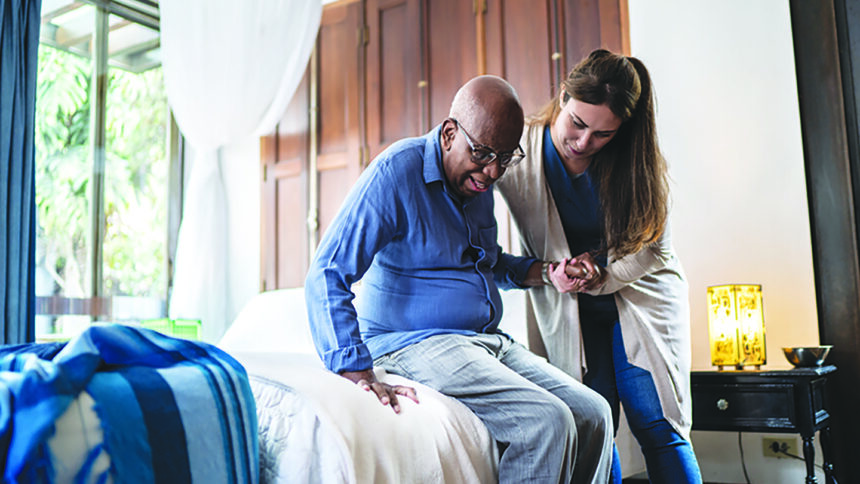
Adequate lighting at home can help older adults with visual impairments move more, and more quickly. But more research is needed to see if modifications can improve this population’s physical activity levels at home, a new study finds.
Researchers examined data on 153 people suspected of having glaucoma or who already had glaucoma. The average age was 71, and 46% of participants were women. Of the people studied, 60% had more than one comorbid illness and about one-third of them took five or more prescription medications.
The researchers looked at in-home steps taken per day, as well as the time spent at home getting physical activity as well as nonsedentary activity. Their report was published Thursday in JAMA Ophthalmology.
For every unit increment in average measured home lighting, the people took 5% more steps daily and had a 3% faster cadence on average. Other indicators of nonsedentary activity were linked to home much lighting was in the home. Neither the total number, nor frequency of home hazards, was linked with any home physical activity metrics.
“Overall, our findings suggest that lighting may play a substantial role in improving physical activity measures at home in certain populations,” the authors wrote.
The news comes after an article published Wednesday in HCPLive spotlighted that glaucoma, along with diabetic retinopathy, uncorrected refractive error and cataracts can be prevented. Early detection and treatment can make a big difference in people with those vision impairments — that is, if people can access care.
“One of the things I’d like to emphasize and one of the areas of need is greater access,” said Joshua R. Ehrlich, MD, a researcher at the Kellogg Eye Center at the University of Michigan. “And this is true in the United States and globally. There’s really [a need for] greater access to care for these two readily modifiable conditions.”




